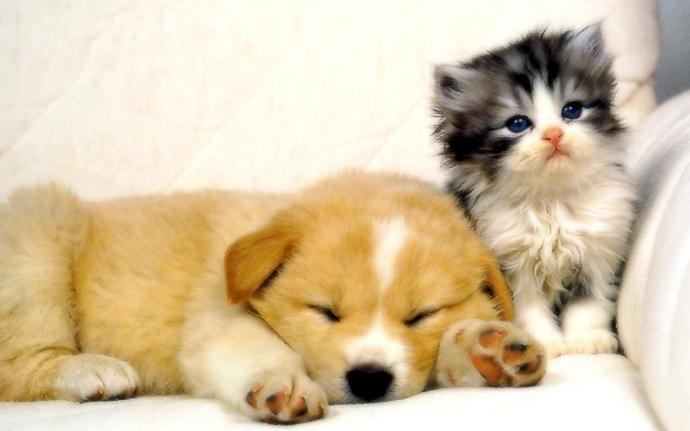It doesn't matter if you are an animal lover or animal hater. The treatment of humans and animals is clearly different. It is not necessarily a bad or good thing. It is just the way things are as the result of thousands of years of domestication.
Anyway, here are things that humans do to their pets that they wouldn't do to themselves.

1. Sterilization
Dogs and cats must be fixed to control the dog and cat populations and the animals' sexual behaviors. It's actually extremely important to spay and neuter a dog or cat at a certain age, because not doing so may attract dogs/cats of the opposite sex from who-knows-where.
You just don't sterilize a human being out of the assumption that other human beings of the opposite sex will be attracted to that human being and start mating. No, you just give humans some birth control and let them take care of themselves. If unwanted children still occurs due to improper use of birth control, then it's their fault. Then, you have the big complicated issue of abortion and infanticide.
2. Feeding Dogs and Cats Gut Meat
Sometimes, you may find pet food in the form of pig ears. Americans typically consider any kind of gut meat as not really meat, so they feed pig ears to their dogs instead. If not, then the unwanted animal products would be grounded up and be made into processed meats, like sausages.
Gut meat nutritionally is not lower-quality meat, because the body will just break everything down into simpler components - carbs, proteins, and fats. The association of offal as not really meat probably stems from the fact that muscle meats have always been classified as a status symbol of the wealthy and the privileged. If fast food restaurants actually serve gut meat in their hamburgers, chicken nuggets, and pizza, then they would receive a lot of bad media publicity. Nope, they must serve "100% real meat", as if the stomach or brain or intestines aren't meat.

3. Petting
Humans certainly like petting. They like it so much that they create petting zoos for young humans and allow complete strangers to pet the dog or cat. They just don't do the same thing to other humans. When have you seen anybody allowing another human to stroke a third human's hair? Nope, that never happens.
4. Putting a Dog or Cat on a Leash and Collar
Dogs are usually put on a leash in public. Their human owners tightly hold onto the leash. With a tug and a firm voice, the human owners guide and control the dogs. Although some adult humans put their own children on a leash and collar, this practice has generated a lot of controversy due to the fact that it treats young children as animals.

5. Exhibiting Ownership of the Dog or Cat
No human can own another human as property. Dogs and cats are considered property. As property, the human owners are responsible for making sure the dogs and cats are house-trained and will behave themselves when meeting other humans. Human owners go as far as selecting puppies and kittens with mild temperaments and allowing only those creatures to breed, while more violent and aggressive offspring are weeded out. So, over several generations, dogs and cats become adapted to live with humans and depend on humans for survival. Humans may select traits in dogs and cats that are useful for humans or may select for traits that really do nothing but appear cute and cuddly.
Sure, animal lovers may say all they want that "my dog is my best friend". But that is the same as saying "my computer is my best friend". As long as the human owns the dog, the dog will always be viewed as property, lacking in free will and conscience.

6. Using Baby Language with Adult Dogs and Cats
Humans may use baby language with adult dogs and cats, especially if the dogs and cats appear cute and cuddly. Imagine one adult human using baby language to another adult human and petting the other human's hair. The interaction may be perceived as sexual. The other human may either accept or reject the sexual advance. If the other human disapproves of the behavior, then s/he may file for a sexual harassment case.
Most Helpful Opinions